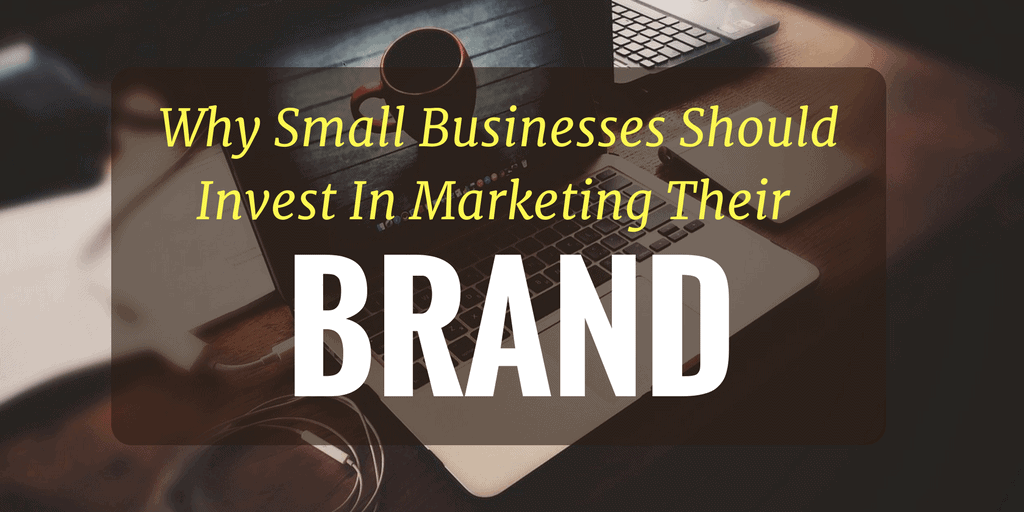Running a small business is like walking on a tightrope, one miscalculated step might cost you the whole investment. With particularly limited time and resources, are branding activities worth the effort? If you are still asking this question, your competitors have already outmaneuvered you. Regardless of size and industry, branding is absolutely essential.
Brand & branding for small business
Is a logo your brand? Not really. It is just a visual representation of your proposed image to customers. In fact, brand is the way your business makes customers feel. Branding, as a result, is a combined effort to ensure that customers think of your business the way you want them to. For instance, if you want to sell refreshing coconut juice, choose bright colors for your cup instead of red or black.
Brand is also the identity that helps customers tell one business from another. When building a brand, you are giving customers something that builds trust beyond your products and services. People are pre-ordering for the new Samsung phone only 6 months after its exploding phone scandal. Why? Samsung identifies itself as a cutting-edge and self-enhanced brand, and customers believe in their promises despite occasional failures. Samsung’s branding efforts pay off.
Branding 101
While brand is important for both big and small businesses, should small businesses adopt the branding practices of their big brothers? Our advice is to choose selective learning. Given that the differences are not just limited to financial resources, personnel and customer base, it is too risky to blindly follow any branding campaign without local adaptation.
So what exactly can you learn? Following are four basic steps charting the path that every successful brand has taken.
Step 1: Build a persona
Customers become more loyal if they can identify themselves with the brand. Thus, the easy way is to think of your business as a person and develop personalities that best attract your targeted segment.
On the other hand, the brand should also reflect your vision and business principles. Try to describe how you want your business to be remembered in three adjectives (e.g. joyful, supportive, reliable, innovative, etc.). Ask your family, close friends and frequent customers for different perspectives.
Take your time to choose the best fit. You’ll want to stick to these characteristics for the life of your business.
Step 2: Make it tangible
Apparently, a brand can take on human characteristics, but not human form. That’s why big brands want to recruit influencers as brand ambassadors (Nike and Michael Jordan, Adidas and David Beckham or more recently, Adidas and Kanye West, etc.). However, for small businesses, personifying your brand by employing an actual human might do more harm than good.
First, it is costly. Technically, a brand ambassador is a marketing executive who is substantially paid despite having no marketing expertise. Once you decide to recruit one, he or she must be influential (at least locally), suitable to brand value and, preferably, exclusive to your business. All these features, by no means, come at an affordable cost.
Second, people change, and so might your ambassador. Unfortunately, people might still associate the ambassador with you even if the contract is terminated. If he or she gets caught up in a scandal, the brand can be affected negatively.
Luckily, other brand visualization options are readily available. Basic elements of brand identity include brand name, logo, color, typography (the font you chose for signboard or any business publications) and tag line (a short description of your brand value). As your business evolves, there will be more to take into consideration. But for now, you should make sure these five listed elements consistently support the image you want to educate customers. Some design knowledge would be an advantage at this step. Why do many fast food chains chose red as their color? Because red stimulates hunger, just like green is associated with freshness and yellow represents youth. How about typography? Basic fonts like Times New Roman or Comic Sans must stay off the list if you want to be known as a modern and trendy brand.
The whole industry of branding material design exists for a sole reason: consistency. If you are not confident in your artistic ability, hire a professional logo designer. The more consistently you portray your business, the easier it becomes for customers to remember and identify with your brand.
The same principle must be applied to content management. Take the example of a modern brand targeting young adults, instead of opening emails with the classic “Dear Sir/Madam,” befriend receivers by saying “Hi” and call them by their first name. Ideally, the same friendly voice tone is easily detected in any published copy, i.e. product and service descriptions, newsletters, emails and replies to customer feedback.
Step 3: Involve customers
Whenever it is possible, ask customers for feedback to improve upon: which characteristics do they find most visible on your website, your social media pages or your storefront? Double check all speculations by observing variations in sales for better analysis of your branding efforts. Supposed you own a website, conduct an A/B test (e.g. run websites with two different layouts at the same time, on the same target group and compare the difference in traffic) to make sure you are heading in the right direction.
Customers are also the best brand evangelists. The idea is simple: Do good and customers will spread the news. “Do good” here doesn’t stop at providing excellent products or services, but also means that you are socially responsible. Start small and communicate about it, e.g. hire senior citizens or fresh graduates whenever possible, encourage employees to participate in volunteer activities or offer free services or products to community events.
Step 4: Hold the leash
Build a schedule for your branding activities, set goals and keep track. As an intangible asset, change in brand value is exceptionally hard to measure. In most cases, small businesses can’t afford professional brand valuation. Our advice is to estimate the buzz based on whatever insights are available. Incorporating website and social media pages in your branding strategy will actually make it easier for you to control performance. Information on branded searches or branded mention is recorded and easily extracted from Google Analytics or Facebook.
And don’t forget to look out for copycats. The fact that you are a small business doesn’t stop busybodies and lazybodies from illegally replicating your successful model. Make sure that your brand name and trademark are officially registered. Actively scan for violations and report them to prevent unexpected sales losses. This adds to your excessive workload and limited budget; but, believe us, your time is not wasted in protecting the brand you have been building and investing in for years.
In short, in the age when even teenagers strive to build their personal brand, it would be problematic to still doubt the validity of business branding. Set time aside now and follow the four steps: Build a persona, make it tangible, involve customers and hold the leash. Don’t hesitate to give us a call if you need more assistance.











